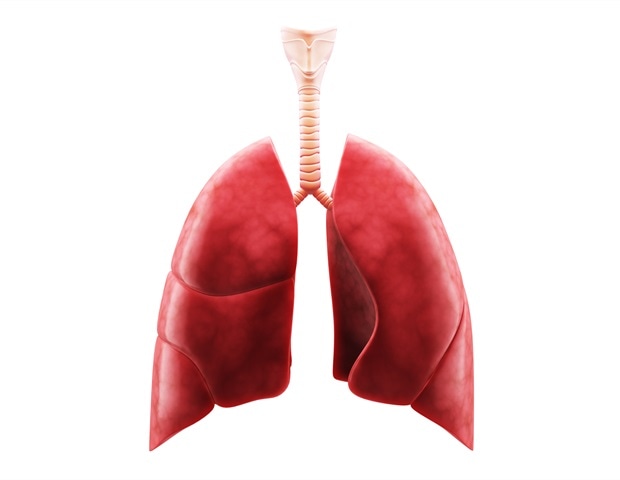Meeting Patients Where They Are

To improve uptake of lung cancer screening and identify disease earlier, health systems need to account for the multilevel factors that can impede screening access, according to speakers at the 2024 World Conference on Lung Cancer, held September 7 to 10 in San Diego, California. The presenters delivered updates on ongoing programs as well as discussed how countries can prepare for large-scale screening initiatives.
Lung cancer screening experts from around the globe delivered strategies and best practices for improving access to screening and facilitating earlier detection. | Image Credit: © Markoff – stock.adobe.com

First, Harry de Koning, MD, of Erasmus MC University Medical Centre in the Netherlands, discussed optimal and cost-efficient recruitment strategies for lung cancer screening. Use of patient registries is impeded by missing data in electronic health records—especially for information like smoking pack-years key to determining screening eligibility.1 More targeted strategies have higher participation rates but can be costly, so he and colleagues initiated a trial comparing 3 recruiting routes: standard paper mailings, a letter nudging recipients to go online to learn more, and tailored online recruitment.
Results showed that these 3 methods did increase response rate compared with baseline screening rates, but individuals with low socioeconomic status responded most to the standard paper mailings.
“That sort of classical way of recruiting with all the information on paper is what we would normally do, but it is probably not so cost-effective,” de Koning said. Therefore, he suggested testing a recruitment strategy that relies on online outreach as the primary method but keeps a paper form available for certain underserved areas.
Next, Nichole Tanner, MD, of the Medical University of South Carolina, showed the results of a centralized approach to lung cancer screening in the Veterans Health Administration. The veteran population has a considerable need for screening due to their demographic makeup, smoking rate, and toxic exposures, so a new memo has mandated that every eligible veteran must be offered screening and every Veterans Affairs (VA) Medical Center must offer high-quality screening.2
This mandate is new, but the administration’s efforts to improve screening go back years. A screening platform began in 2017, which pulls from the electronic health record, and the Lung Precision Oncology Platform started in 2020. The latter enables veterans to get involved with clinical trials and connects them to molecular testing. Importantly, this uses a hub and spoke model to connect centers of expertise.
“For example, in Charleston, I’m about an hour and a half away from Columbia, where there’s only an advanced practice provider, and she and I meet weekly and go through [cases]. We bring patients down and try to get everything done within VA and provide resources for the veterans to stay locally at no cost to them,” Tanner said.
Next steps for the VA’s lung cancer screening efforts include incorporating biomarkers in screening outreach and adding Healthcare Effectiveness Data and Information Set measures into the lung cancer screening platform.
The next presenter, Nicole Rankin, PhD, of the University of Melbourne, delivered an implementation science perspective on how Australia can prepare for its national lung cancer screening to begin in 2025. It’s a large country with an unevenly distributed population and known health disparities among groups like Aboriginal people, so a one-size-fits-all screening program will not be successful. Rankin’s work focuses on exploring the methods that will enhance adoption, implementation, and sustainability, and she and colleagues have found that lung cancer screening behavior is determined by capability, motivation, and opportunity.
For instance, individuals who have declined screening may report lack of motivation due to their low feelings of self-efficacy if they haven’t successfully quit smoking after past attempts. To match the strategy to the barrier, Rankin suggested recording testimonials from participants who have undergone the screening process and can talk about their positive experience. She and colleagues are also working on pilot testing strategies that have proven effective in other countries, such as the navigator model of care that’s been successful in the US.
Conducting preimplementation research “gives you the advantage of thinking about how people might respond to screening before programs are implemented, you can identify those barriers around awareness and access from the perspective of eligible participants and health care professionals, and using the accumulated knowledge that you gather from your programs can essentially help to answer policy-relevant questions,” Rankin concluded.
Lastly, Raymond Osarogiagbon, MD, of Baptist Cancer Center in Memphis, Tennessee, discussed overcoming geographic, socioeconomic, and racial disparities. A framework for understanding disparities could start at the patient level (race, education, socioeconomics), then provider level (knowledge, cultural competency), then institution level (infrastructure, processes, culture), then social policy (health care coverage and access).
“Our levers to make things better are actually the reverse of this order. It’s the social policy that has the biggest lever to make things better, all the way down to the patient level,” Osarogiagbon said.
Working backwards from the problem, Osarogiagbon and colleagues looked at the barriers to screening in a patient cohort already diagnosed with lung cancer. Many didn’t qualify so were ineligible for screening, and many of the eligible were not screened, with the end result that out of 3074 patients in that cohort, only 131 had undergone multiple screenings. Higher proportions of the unscreened and ineligible patients were Black.
One intervention that can close these gaps and save lives is that health system’s incidental lung nodule detection program. For instance, a patient who comes to the hospital for a scan after a car accident and has a suspicious pulmonary nodule detected on that scan will be connected for follow-up to determine if that nodule is actually cancer. This helps further the goal of meeting people where they are, which is especially important for reaching those who might slip through the cracks of traditional screening methods.
The health care provider and institution have an important role to play, even though they don’t control societal policy: “What I can do is I can build the environment of care delivery as close to these populations as we can, to make it easier for them to gain access. I can put together teams of providers who understand the nature of the problem, sympathize with it, and are willing to commit to it. I can put together processes that measure and feedback and transparently let us know when we’re doing well and when we’re not doing well, who’s doing well and who’s not doing well, understand why you aren’t doing well and what can we do to help you do better.”
“I’m a big believer in the idea that you cannot improve what you don’t measure. So if there’s one thing I have done in my health care system, it’s that I have insisted on a culture of measurement. Every single decision we make has to be data driven,” Osarogiagbon said.
References
1. Marcotte LM, Khor S, Flum DR, et al. Factors associated with lung cancer risk factor documentation. Am J Manag Care. 2023;29(9):439-447. doi:10.37765/ajmc.2023.89354
2. VHA directive 1417: lung cancer screening. Veterans Affairs. May 29, 2024. Accessed September 8, 2024.
link






